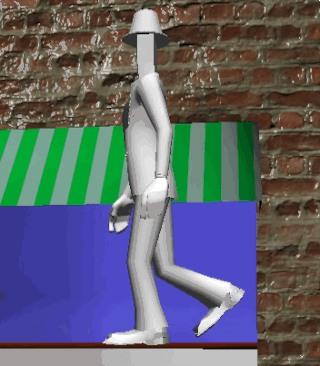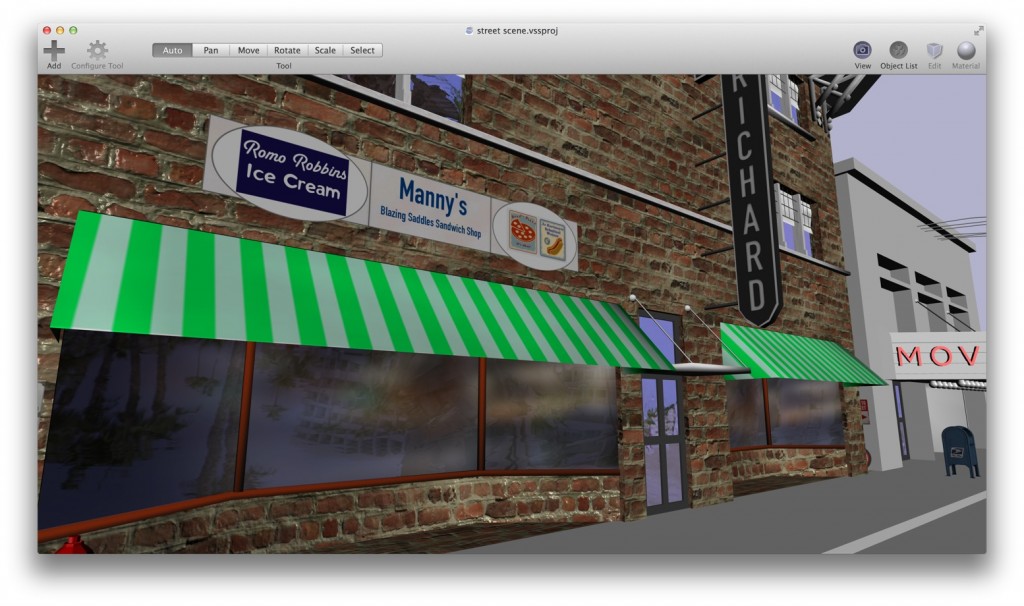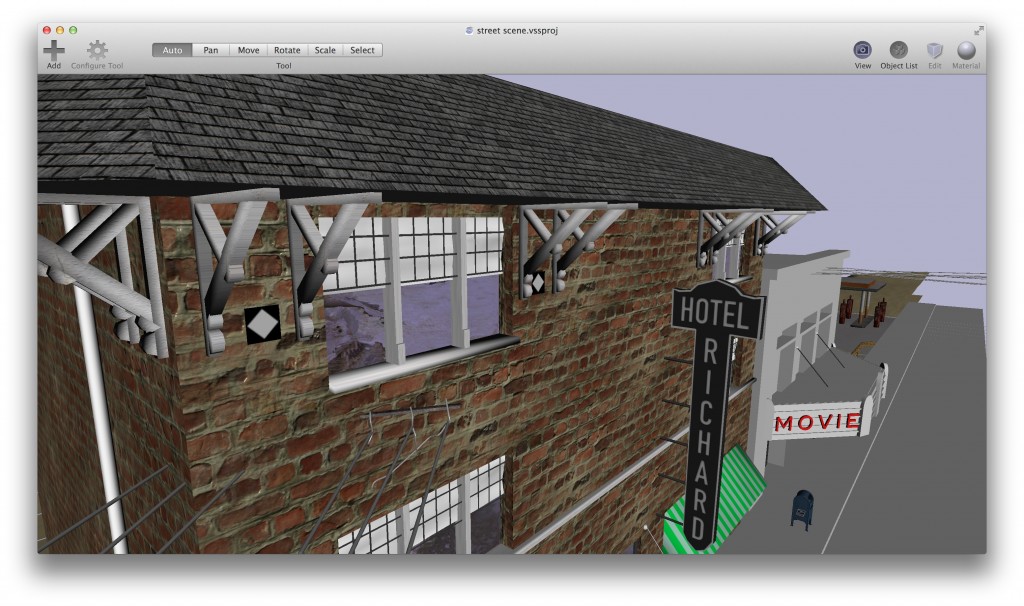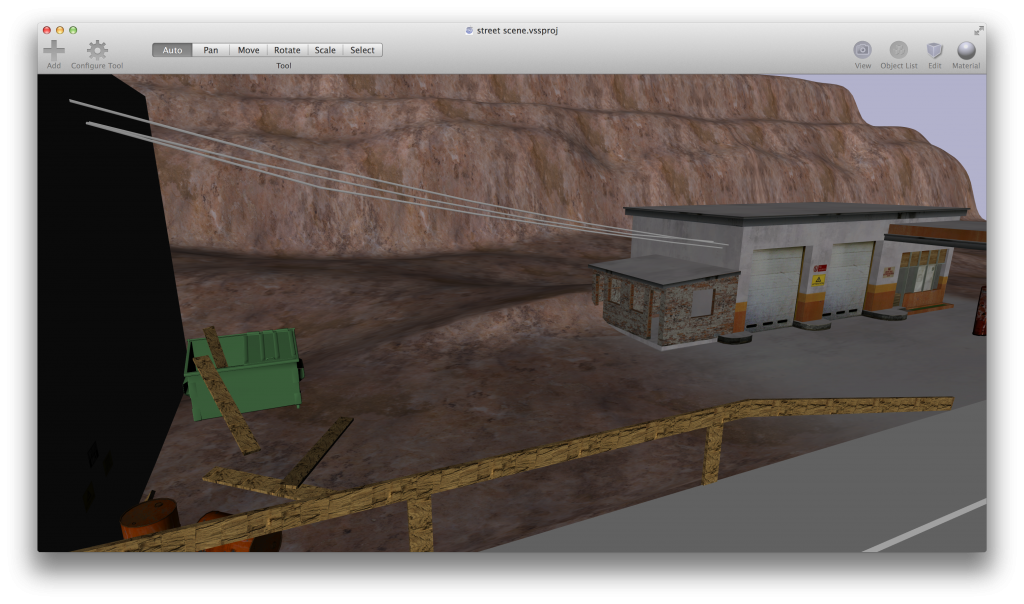Yesterday I worked quite a bit with my character animator Tyler Hurdle to get the animations properly exported from his modeling software into my graphics engine. After much wrestling, I got the simple walk cycle loaded in and it looks awesome. 
Things happened today. Those things included me finishing up the texturing for the Hotel. I must say, it’s really starting to look good. I can’t imagine how it’s going to look once I add in the final shadowing and post-processing effects. I didn’t take as many intermediate screenshots as I should have this time. So I only really have the final results of where I am at the end of today. Nothing too-far out of the ordinary happened during the last steps of the texturing of the hotel besides me modifying the basic window shader effects to include partial transparency. I did this so that I could “cheat” with the interior shops of the hotel, modeling the interior as a simple gaussian-blurred backdrop which is partially of obscured by the semitransparent window.
I also decided to get rid of the ugly default “sand” texture that I’ve been using for my background terrain. I spiffied this up a bit with multitexturing effects using a detail texture which came out pretty awesome.
After all this, the frame rate performance within the editor and the game started to both get really bad. So I had to stop modeling and dive into some optimization once again. Using instruments within xcode, I uncovered some horrors related to the terrible performance of objective-c’s NSString methods (namely stringWithFormat) which forced me to eliminate their usage and some of the more critical sections of the rendering engine’s code. That alone, gained me another ten frames per second back and started getting me to question the viability of Objective-C for hardcore game engine development. I sure hope Swift’s string methods are faster than Objective-C’s.
Continuing with optimization, I put off the long-needed step of sorting scene entities first by transparency, and then by material. This helped me avoid unnecessary state changes which propagate to the shader and harm performance. I also hard-coded a backface culling test which showed that I really need a per-model “cull backfaces” option within the editor. All of this optimization added up quite a bit to bring my performance back up to a reasonable level.
All of this work today uncovered quite a few new bugs in the editor itself, so tomorrow will likely be spent fixing those…


